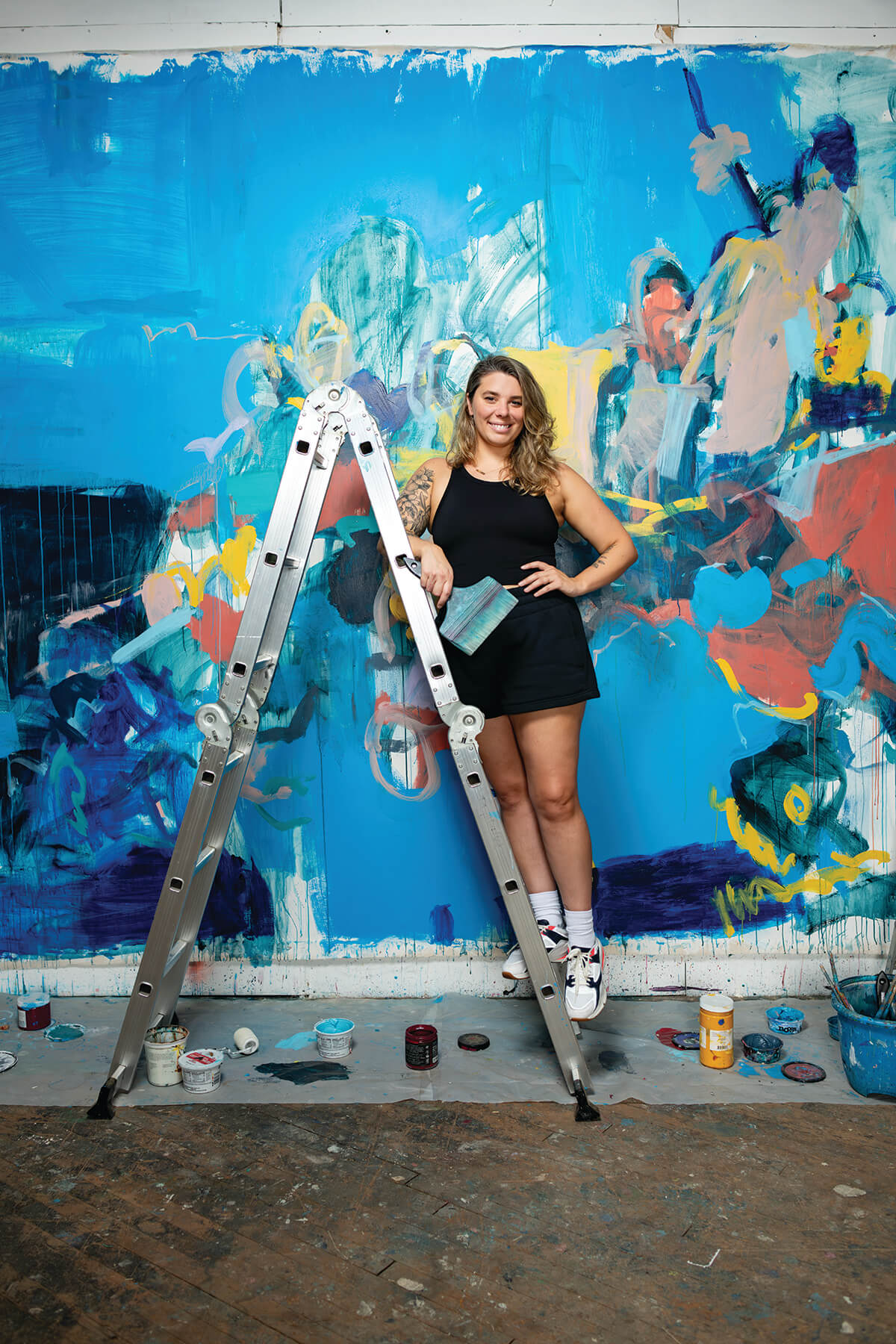Arts & Culture
Katie Pumphrey Reflects on Her Epic Swim and How the Water Influences Her Art
In June, the marathon swimmer and multidisciplinary artist set a record as the first person to ever complete a 24-mile, open water swim from Sandy Point State Park to the Baltimore Harbor.

In late June, marathon swimmer, multidisciplinary artist, and 36-year-old Baltimore resident Katie Pumphrey set a record as the first person to ever complete a 24-mile, open water swim from Sandy Point State Park near the Chesapeake Bay Bridge to the Baltimore Harbor.
It wasn’t her first rodeo, so to speak—the lifelong swimmer and swim coach has participated in major swims around the world, including around the island of Manhattan and across the English Channel. But for this swim, just months after the collapse of the Francis Scott Key Bridge, she had what seemed like all of Baltimore behind her. Over the course of 14 hours, through night and day, she navigated from the nation’s largest estuary up the Patapsco River to the Harborplace Amphitheatre, where a horde of cheering fans awaited her.
We sat down with Pumphrey to hear about her epic swim and how the water influences her art.
A lifelong swimmer, you got into open-water swimming via the local Chesapeake Bay Swim in 2010. How did you move on to bigger swims around the world?
I started reading books and memoirs from other swimmers. Ultramarathon swimming is such a uniquely woman-centered sport, with pioneers like English Channel swimmer Lynne Cox. I ended up swimming the Channel myself twice, in 2015 and 2022, and I found the most welcoming and encouraging community of ultramarathon swimmers around the world. Lynne Cox actually called me to wish me luck. The public underestimates women, but in this sport, no one does.
How did you dream up the Bay to Baltimore Swim?
The moment that the Waterfront Partnership announced that Baltimore Harbor was swimmable in 2023, I wanted to get involved. I emailed them three minutes later…I wanted the swim to be grand, a 20- to 30-mile range, and I wanted it to draw positive attention to Baltimore. The Bay Bridge is 24 miles away, and that felt perfect to us.
What was the swim like?
I left Sandy Point in the darkness, and it was wild. It’s really hard to get a rhythm; it’s also when your imagination is at its loudest. I kept thinking about [the possibility of] sharks, and telling myself, “It’s their living room, you’re just swimming by.” But then there was the most beautiful sunrise hour. By the time I made it to [a remaining span of] the Key Bridge, the conditions were really rough. I switched to a backstroke to go under the last span. The sun disappeared behind it, and it was overwhelming, and incredibly moving. I took a few deep breaths, turned back over, and went on.
How does swimming influence your work as an artist?
A lot of my work focuses on playing with our instinct to react to stress and chaos—how our imagination can play tricks on us and how we steady those anxieties through humor. That draws on my experiences in the water, teeter-tottering between steady and unsteady ground. Sharks, alligators—they are sea monsters that are representative of our fears, and I explore how we can push past them.